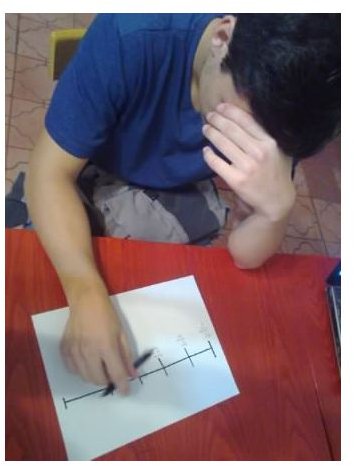Learning the Spanish Preterite Tense: Lesson Plan for Beginner Spanish Students in Grades 8-12
Discerning between preterite past tense and imperfect past tense can be challenging for students. Giving them opportunities to feel the words through charades and put the words into practice through a timeline will give students concrete examples to aid in the mastering of these tenses.
Lesson 3 Objectives:
- Students will become familiar with preterite tense conjugations for regular verbs with –ar, -er, and –ir endings.
- Students will be able to use regular preterite tense verbs in a sentence and on a timeline successfully.
Materials:
- Notebooks
- Pencils
- Slips of paper with actions on them
- Timeline Sheet
Lesson Procedure:
1. Introduction: Write subject pronouns on the board.(i.e. yo, tú, él, ella, usted, nosotros(as), ustedes, ellos(as)). *Note: vosotros(as) may be added in if necessary.
2. Discuss how words in English change when talking in present and in past tense. Explain Spanish verbs also change in the past but that there are two different forms: preterite and imperfect. Explain the two forms as follows:
- Preterite: Specific actions that happened in the past with an implied beginning and end- like events on a timeline (i.e. Ella llegó ayer).
- Imperfect: General actions that happened in the past with no definite beginning or ending (i.e. Ellos llegaban de vez en cuando).
3. Create a chart on the board and allow students to copy down in their notebooks. Explain that -er and –ir verb endings are conjugated the same in preterit. Give an example verb for each.
- –ar verbs: -é, -aste, -ó, -amos, -aron. (hablé, hablaste, habló, hablamos, hablaron)
- **–er verbs: -**í, -iste, -ió, -imos, -ieron. (bebí, bebiste, bebió, bebimos, bebieron)
- **–ir verbs: -**í, -iste, -ió, -imos, -ieron. (viví, viviste, vivió, vivimos, vivieron)
4. Put sentences on the board and have students come up and conjugate.
- Tú ______________ (conocer) mi amiga el sábado. (conociste)
- Usted ______________ (mandar) el documento. (mandó)
- Nosotros ______________ (sentir) mal. (sentimos)
- Ustedes _________________ (llegar) muy tarde. (llegaron)
- Yo ________________ (vender) mi carro la semana pasada. (vendí)
5. Give each student a small slip of paper that has an action on it (i.e. Caminar). Split the class into two groups. Have one student come up from the first group and act out what the slip of paper says. The group must guess what the student did and describe it using a preterite tense phrase (i.e. él caminó). Have the first group do this and see how many actions can be guessed correctly for one minute, then give the second group a turn, keeping score on the board.
6. Pass out papers with a timeline on it. Ask student to create a timeline with at least ten important events from their lives. Have them write the events in preterit tense (i.e. Nací en 1995, etc.).
Assessment:
It will be rather easy to tell which students have a good handle on preterite while the class is playing charades, however, to get a view of student comprehension, collect the timelines they created. Check for correct conjugations of –ar, -er, and –ir verbs.
Once students feel comfortable in preterit tense, they are ready to move onto imperfect. Having two forms for past tense can be a little tricky, but the more exposure and practice students have, the more fluidly they will discern between the two!
This post is part of the series: Teaching the Spanish Verb Tenses
This unit goes through all the Spanish verb tenses: Present, Future, Preterite, Imperfect, and Conditional. These lessons are appropriate for beginner students in grades 8-12.
